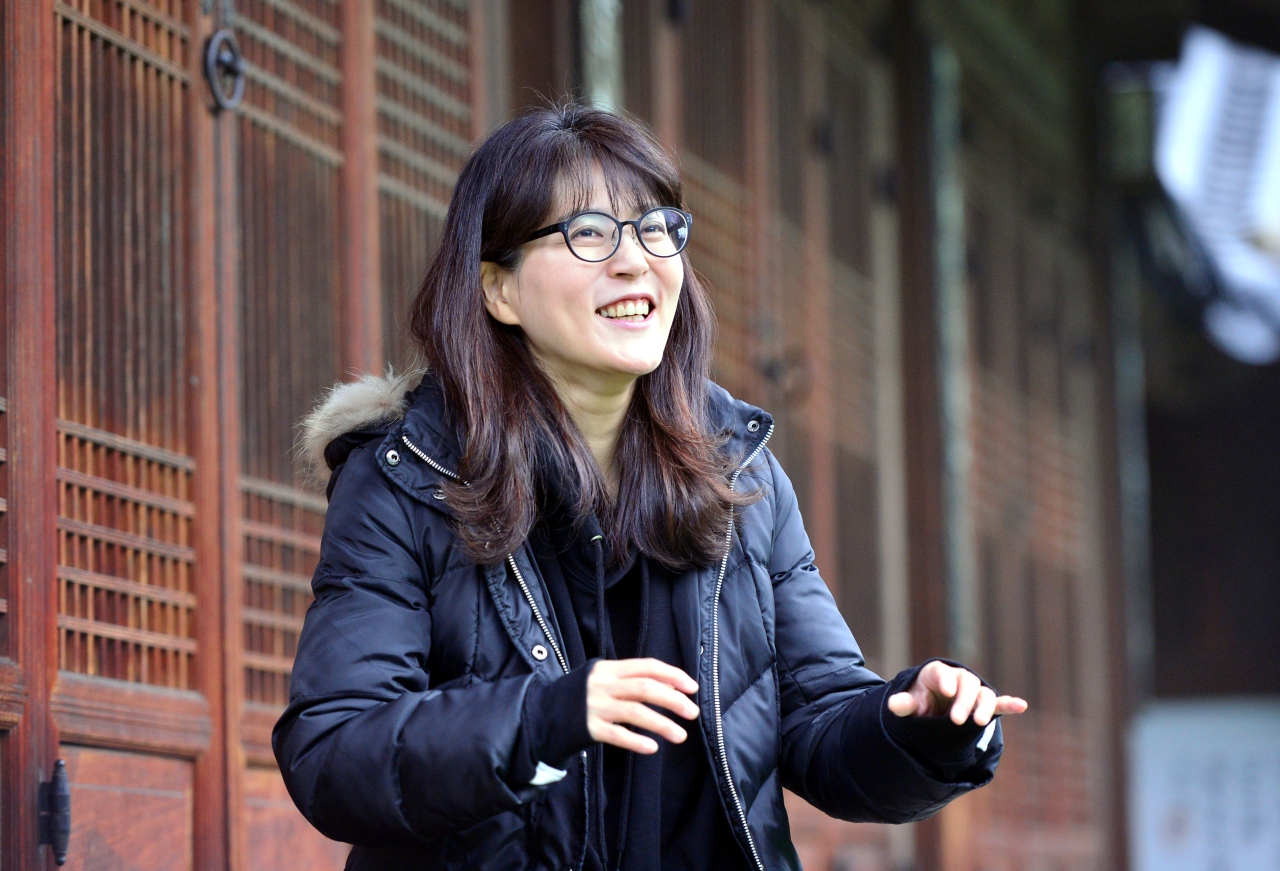[Herald interview] String sounds of Pyongyang ring alive in Seoul
By Im Eun-byelPublished : Dec. 19, 2019 - 17:50
Though the gayageum, a 12-string zither-like instrument, can be traced back to ancient times, it has evolved in different ways in North and South Korea, according to a gayageum player who has traversed the two Koreas to practice her art.
Park Soon-a, 51, will be performing various gayageum solo pieces composed and played in North Korea at her solo recital “North Korea Gayageum,” to be held Friday and Saturday at Seoul Namsan Gukakdang.
Park is an ethnic Korean from Japan, known as a “zainichi” in Japanese, part of the Korean diaspora in Japan established in the early 1900s. To this day, a large number of zainichi believe their motherland is North Korea, as the North financially supported the community from early on.

“I traveled back and forth between Osaka and Pyongyang, studying gayageum,” Park told The Korea Herald during an interview at Seoul Namsan Gukakdang in central Seoul on Tuesday. She was enrolled in the overseas program of Pyongyang University of Music and Dance.
According to the artist, gayageum music in North Korea flourished in the late 20th century, during the “gayageum renaissance.” One of the reasons for this renaissance was a project undertaken in the 1960s and 1970s to reinvent the instrument.
The gayageum, originally a 12-string instrument, was turned into a 21-string instrument in the North. Also, the instrument used in the North has legs, allowing players to perform while sitting on chairs. The nylon-wrapped wire strings produce a depth of sound that surpasses that of the silk threads used in the original instrument. The tone scale is seven, not five as in traditional Korean music.
South Korea followed with a reinvention of its own in the 1990s, creating a 25-string gayageum. But eventually the 12-string gayageum made its way back to the mainstream as part of a movement to restore tradition.
“The reformed gayageum’s sound range is wider and a player has to use both hands to play. The instrument is more adapted to playing modern music,” Park said. “Also, masters of gayageum fled to the North during the Cold War period, hoping to pursue pure art under the socialist regime, in result, raising the standard of gayageum compositions and playing techniques in the North,” Park said.
However, though the North Korean gayageum scene had its charms, Park wanted to know more about the traditional sounds of the gayageum, the original sound of the more than 1,000-year-old instrument.
To fulfill her yearning for learning, she gained South Korean citizenship in 2005, despite having been part of a pro-North community. After naturalization, she studied at the prestigious Korea National University of Arts.
“Gaining South Korean citizenship was much easier than I had thought. Of course, I had to deal with my parents and friends. My parents respected my choice. Some of my friends were surprised and doubtful at first, but nowadays, they are supportive of my music,” she said. Park currently resides in both Seoul and Osaka.
The upcoming recital pays homage to Park’s earlier days when she first began to play the gayageum. She was inspired by a gayageum casette tape from North Korea. In the recital, Park will perform gayageum compositions that are unfamiliar to the South Korean audience.
For instance, “General Mobilization” (unofficial translation) is a composition listed in the North Korean dance show “Arduous March,” an attempt to encourage people to take part in the revolution. “On the Road to a Showdown” (unofficial translation) depicts a battle for North Koreans to regain their home country.
There are also “less fierce” compositions, songs about love and the beauty of nature.
“Most of the audience would not be familiar with these compositions,” Park said, stressing that the program was designed to inform the audience about the music scene of North Korea.
The recital takes place at Seoul Namsan Gukakdang at 8 p.m. on Friday and at 5 p.m. on Saturday. Tickets cost 30,000 won.
By Im Eun-byel (silverstar@heraldcorp.com)







![[KH Explains] How should Korea adjust its trade defenses against Chinese EVs?](http://res.heraldm.com/phpwas/restmb_idxmake.php?idx=644&simg=/content/image/2024/04/15/20240415050562_0.jpg&u=20240415144419)











![[Today’s K-pop] Stray Kids to return soon: report](http://res.heraldm.com/phpwas/restmb_idxmake.php?idx=642&simg=/content/image/2024/04/16/20240416050713_0.jpg&u=)